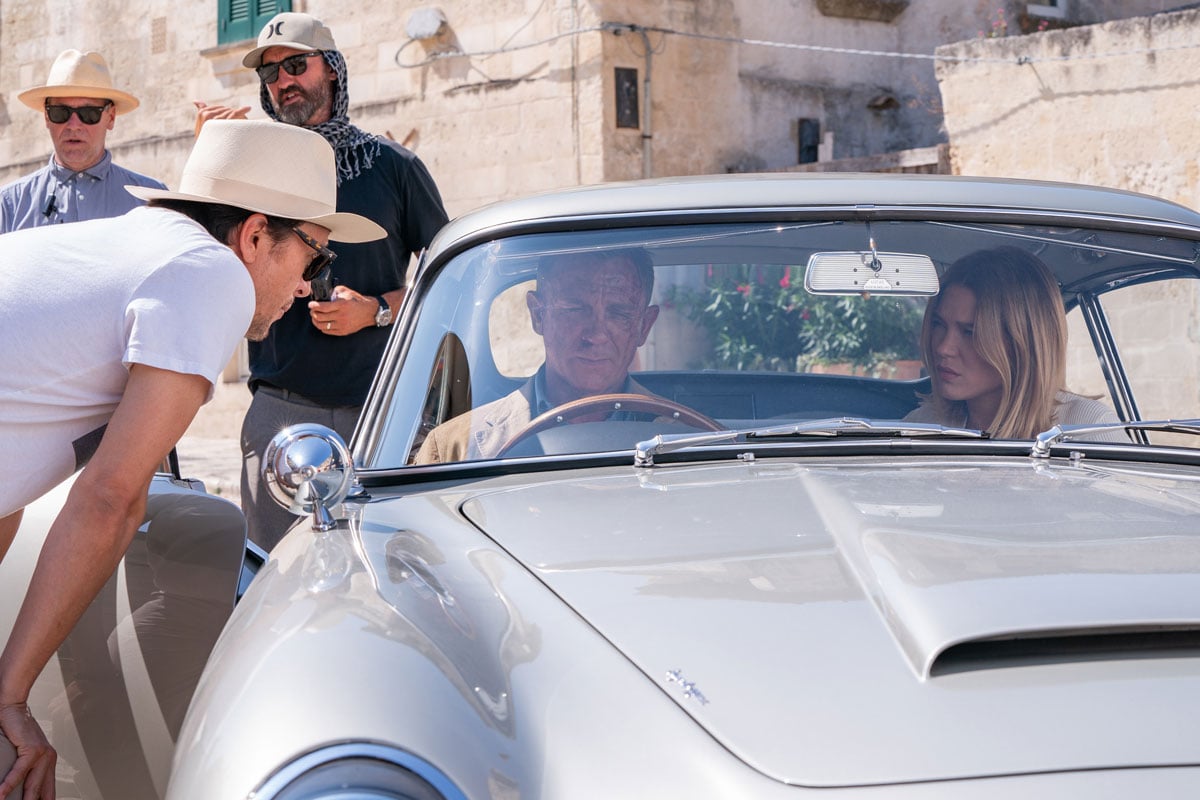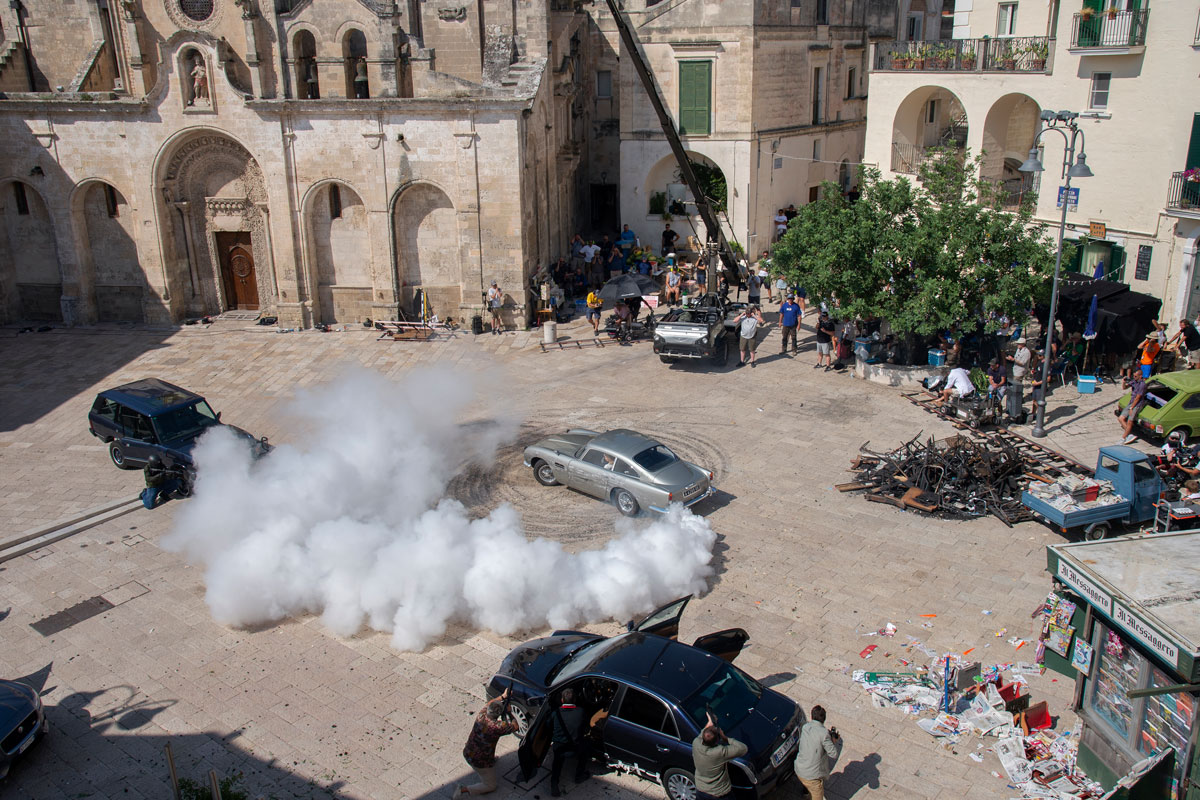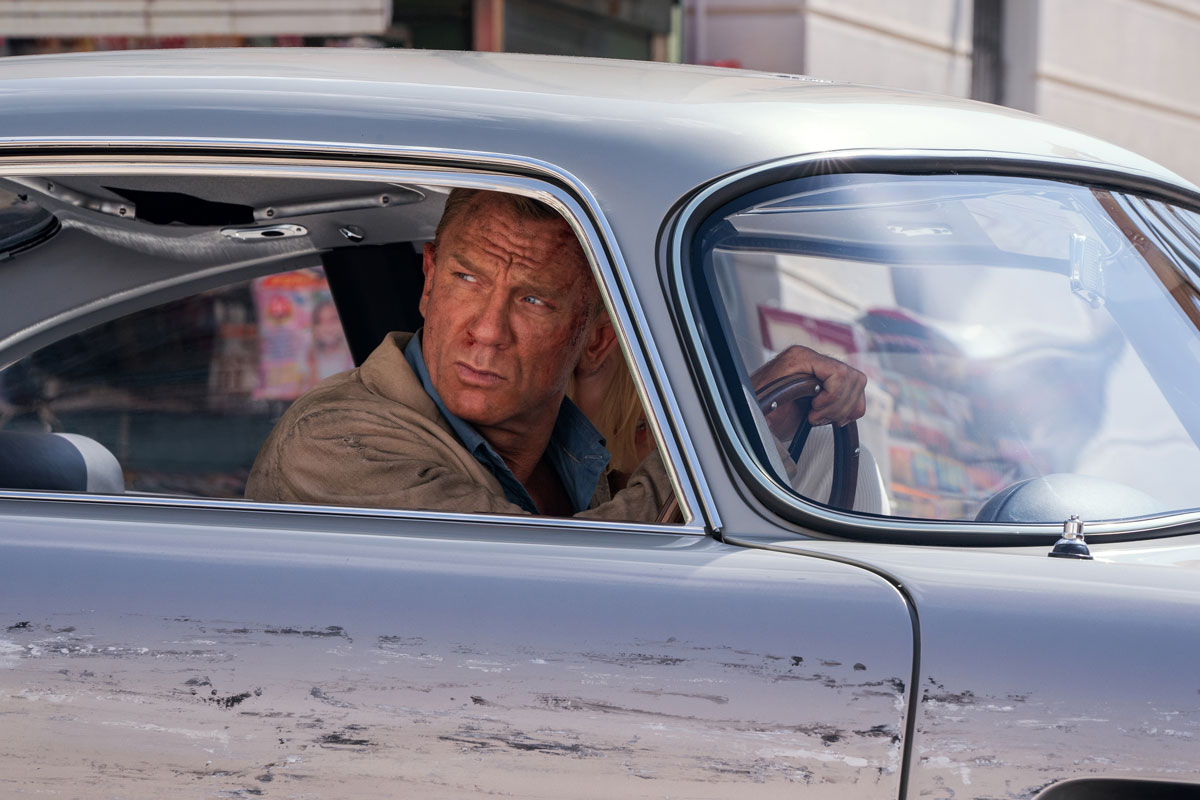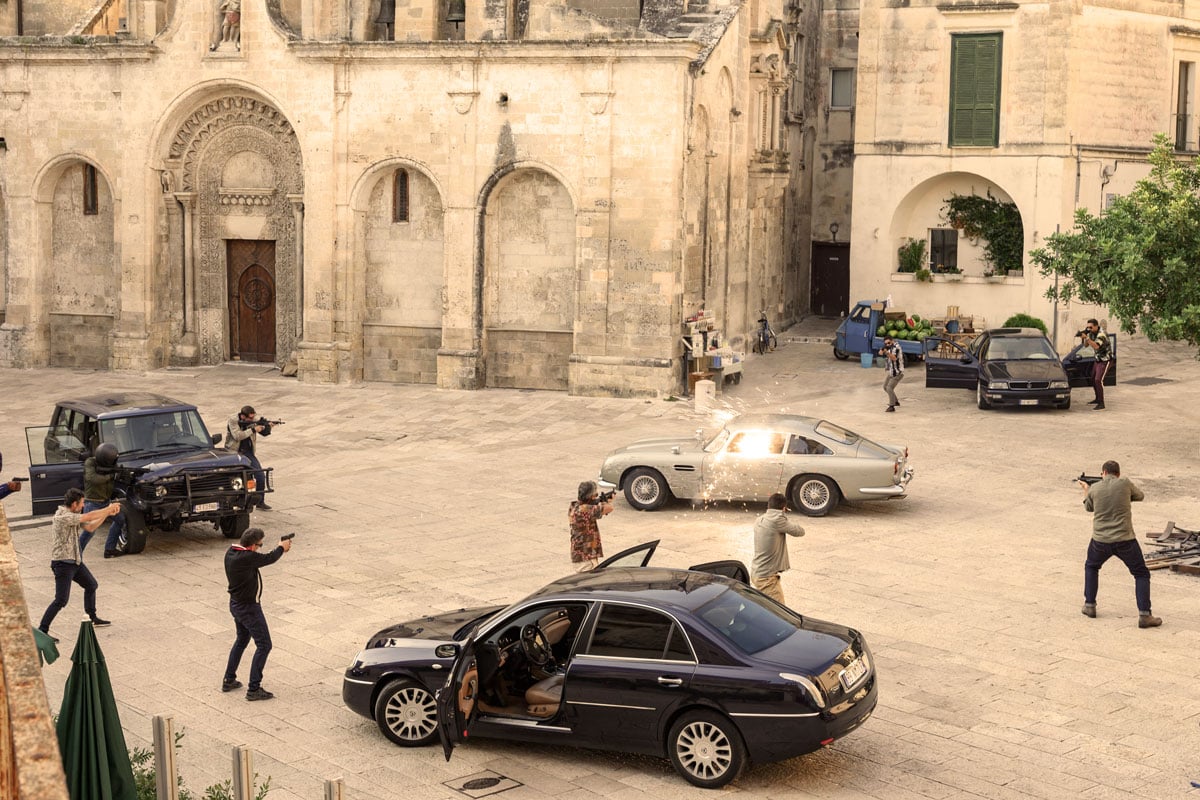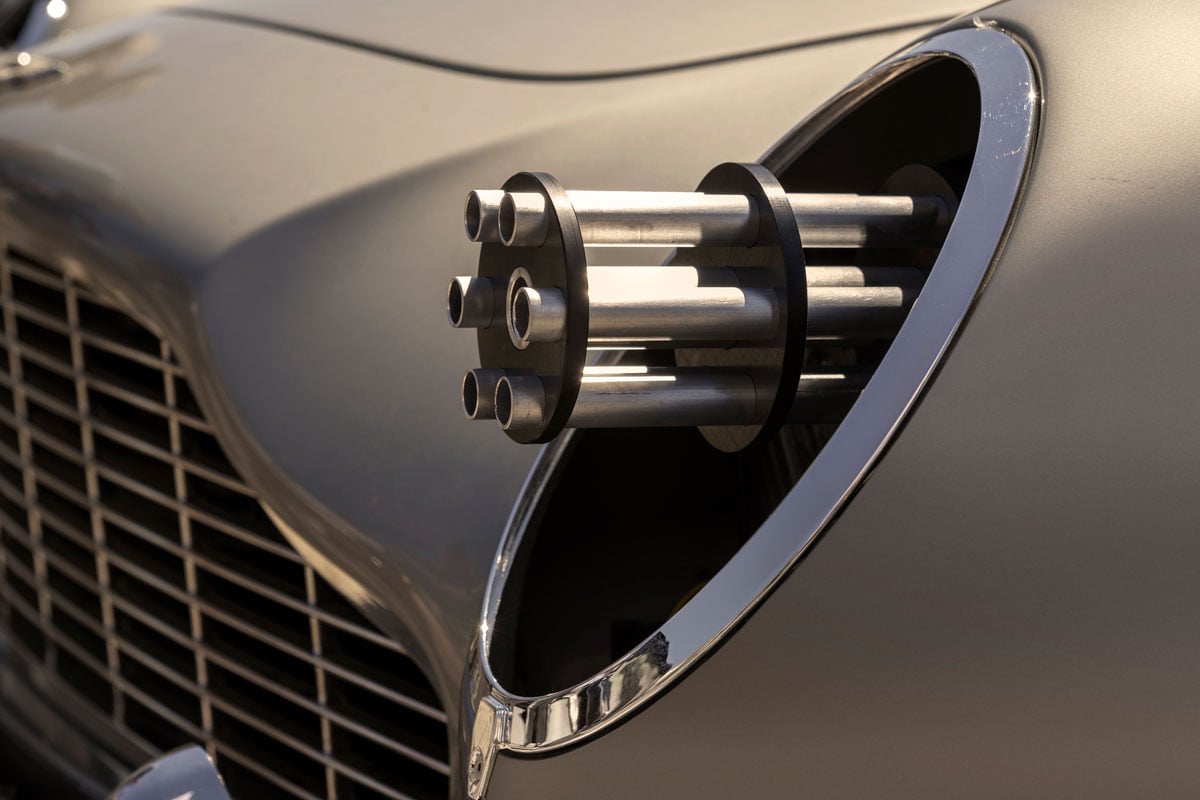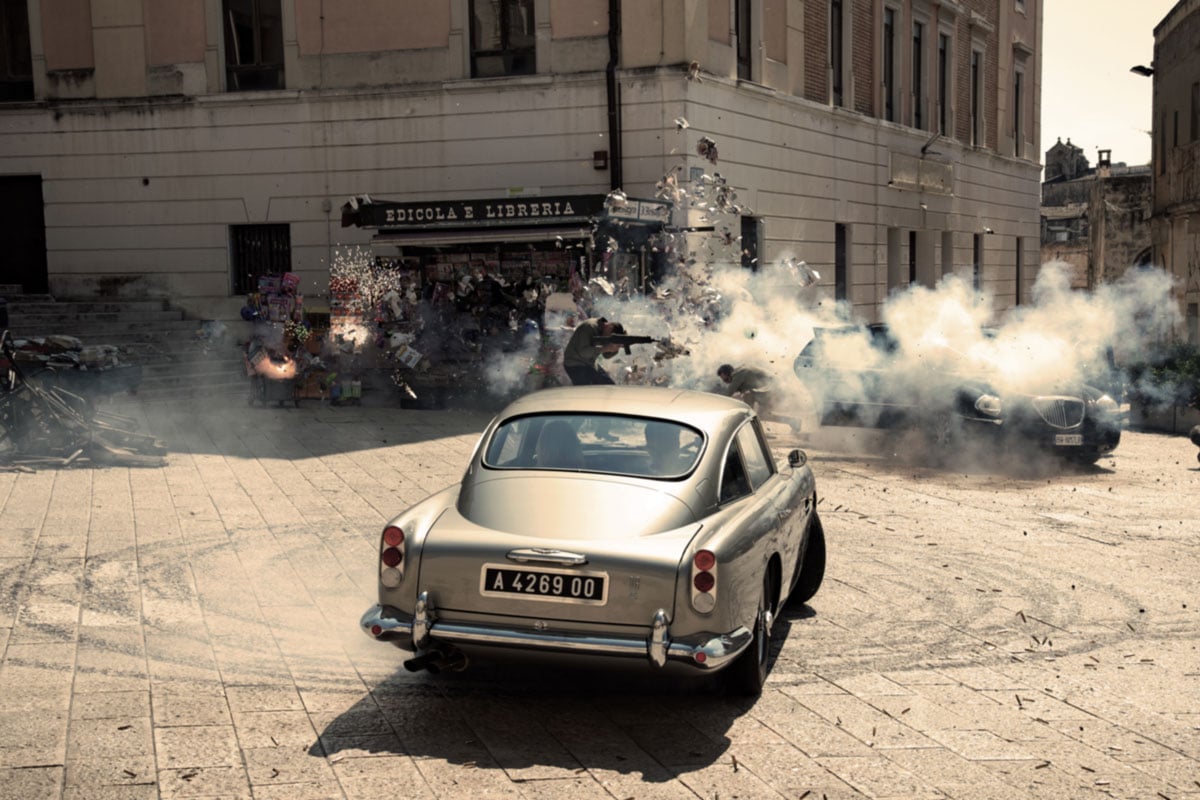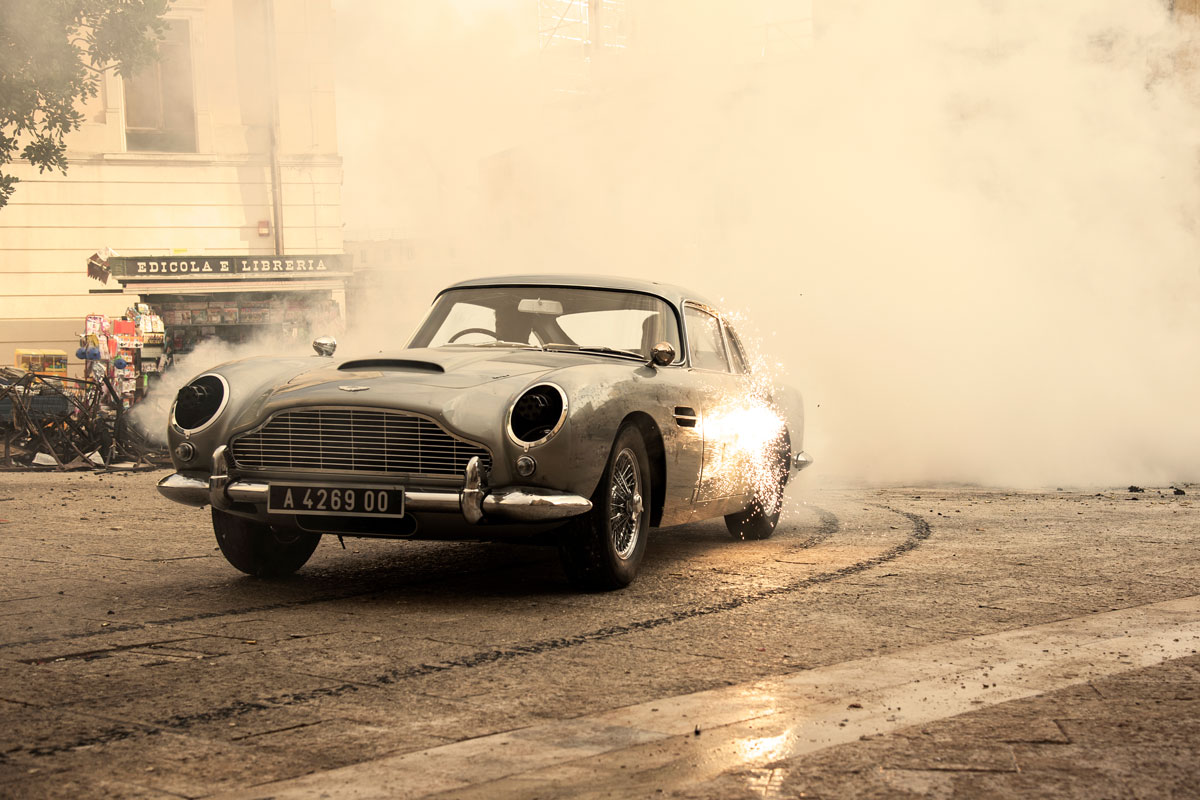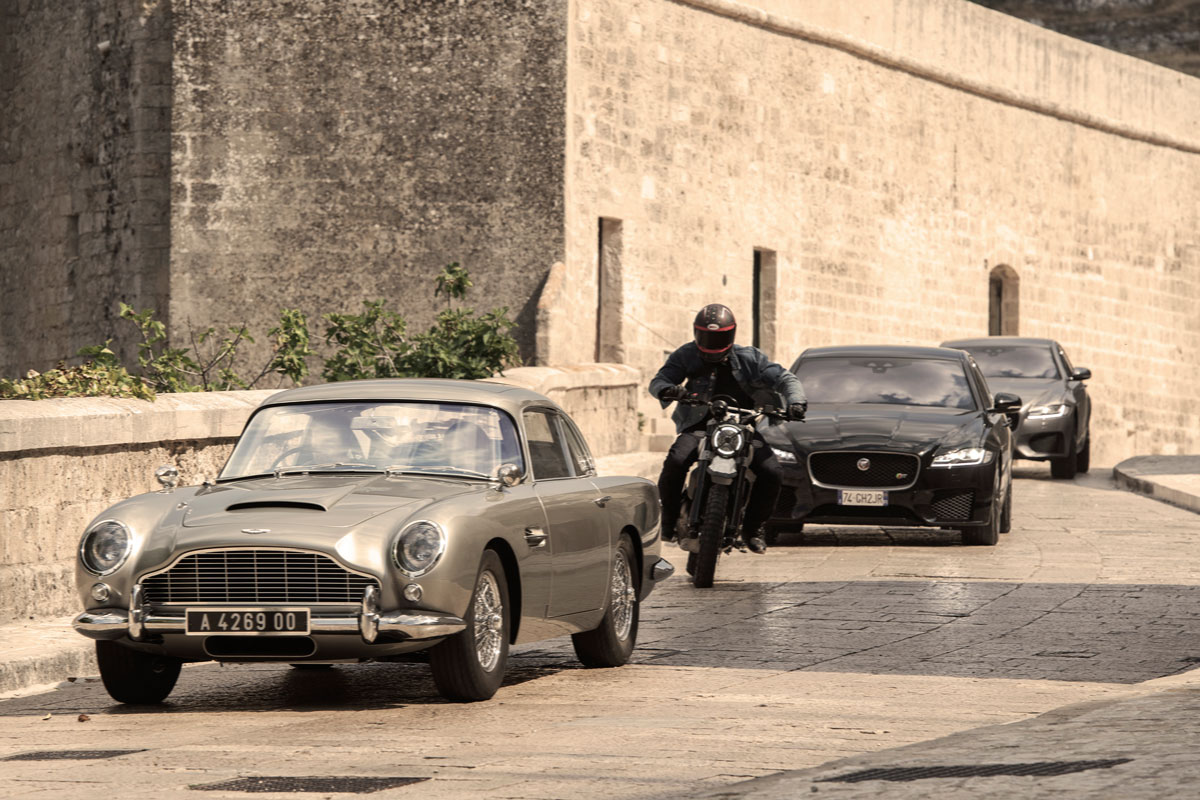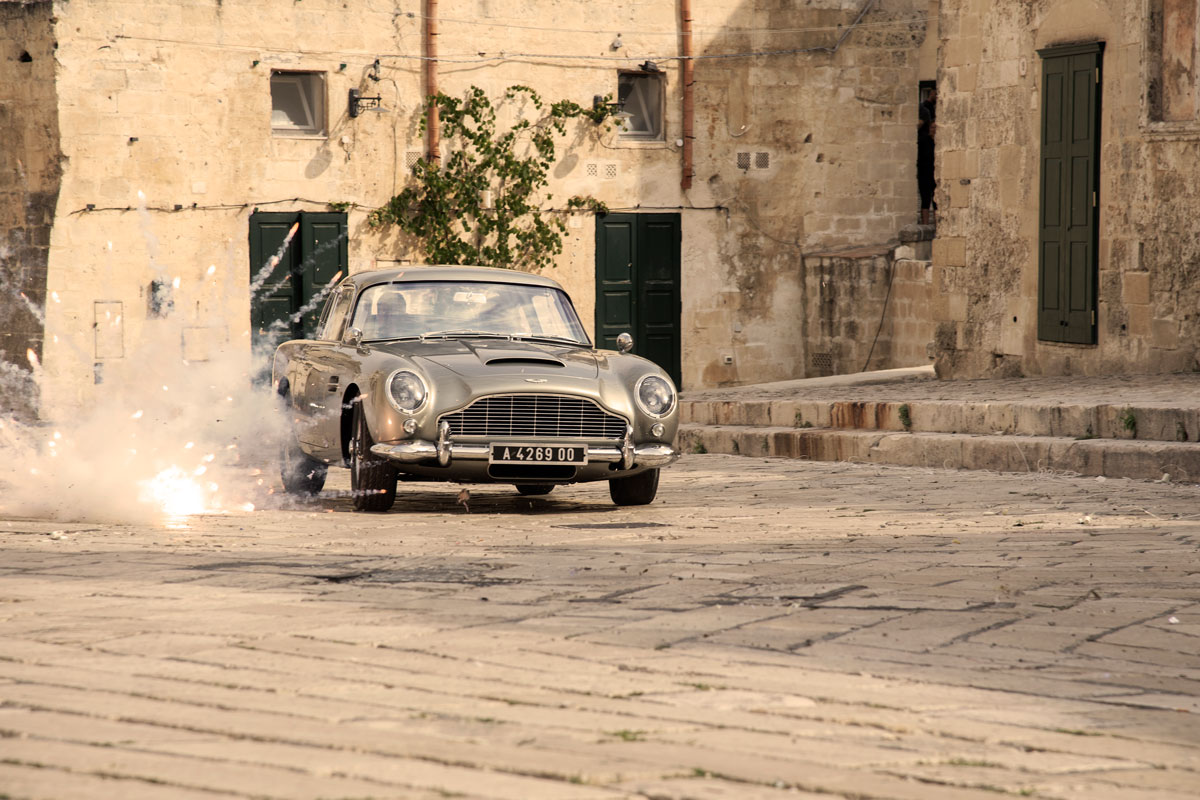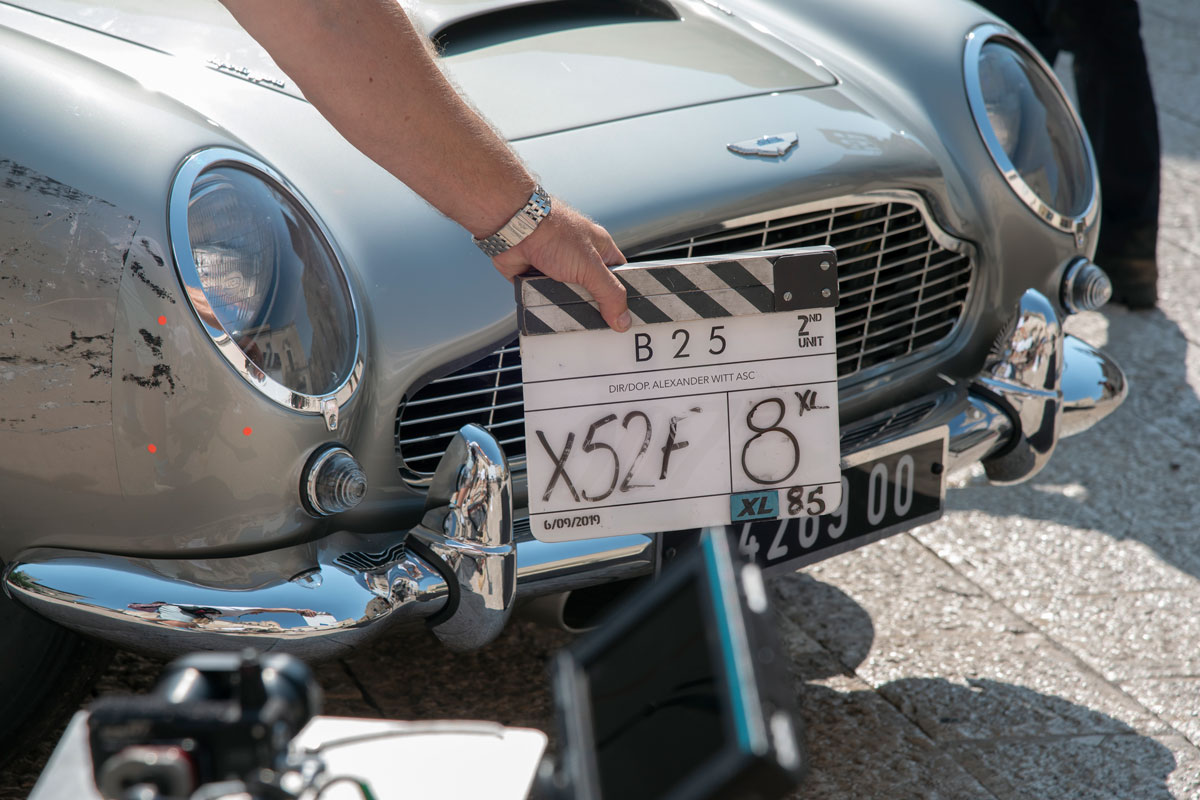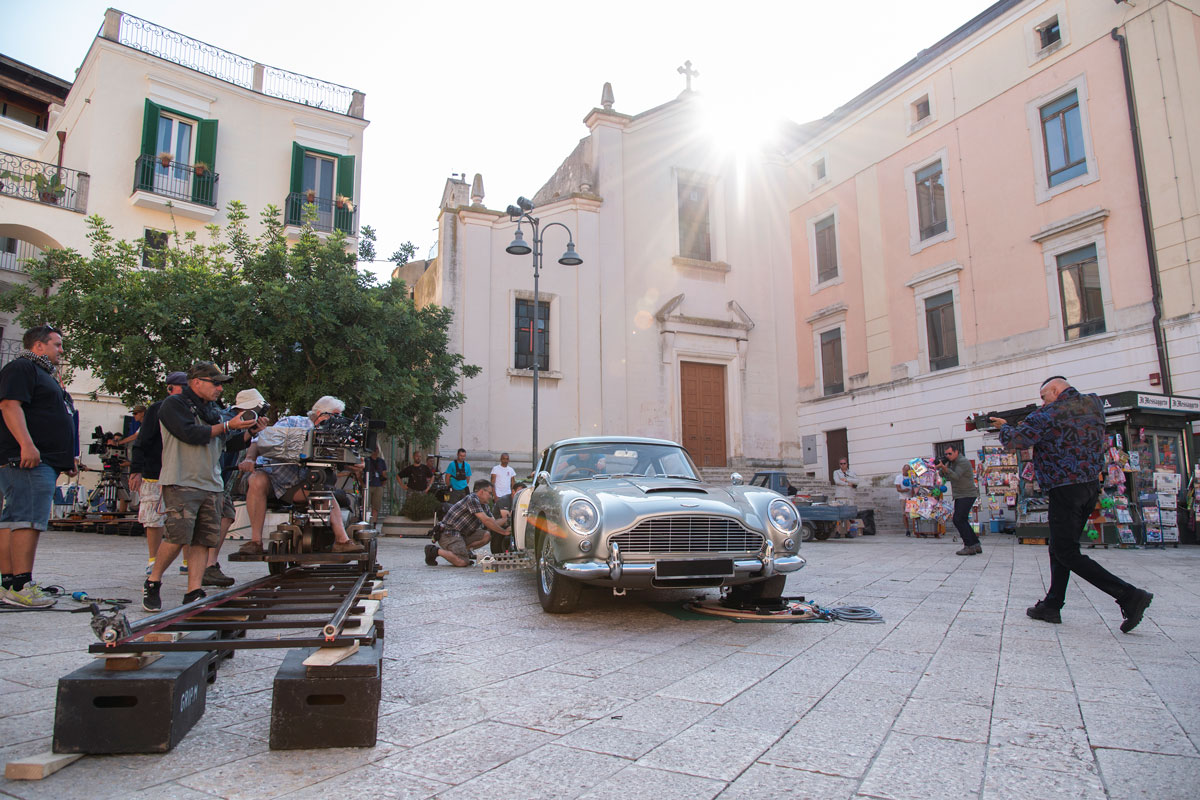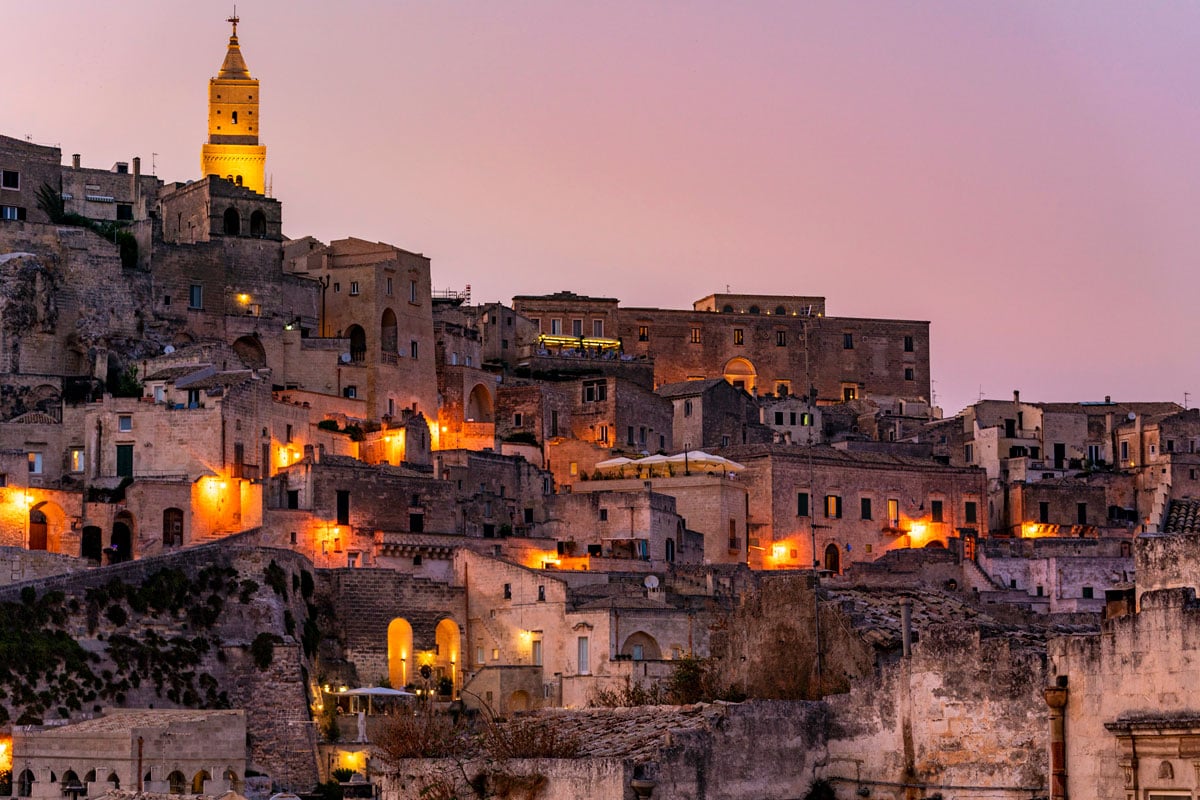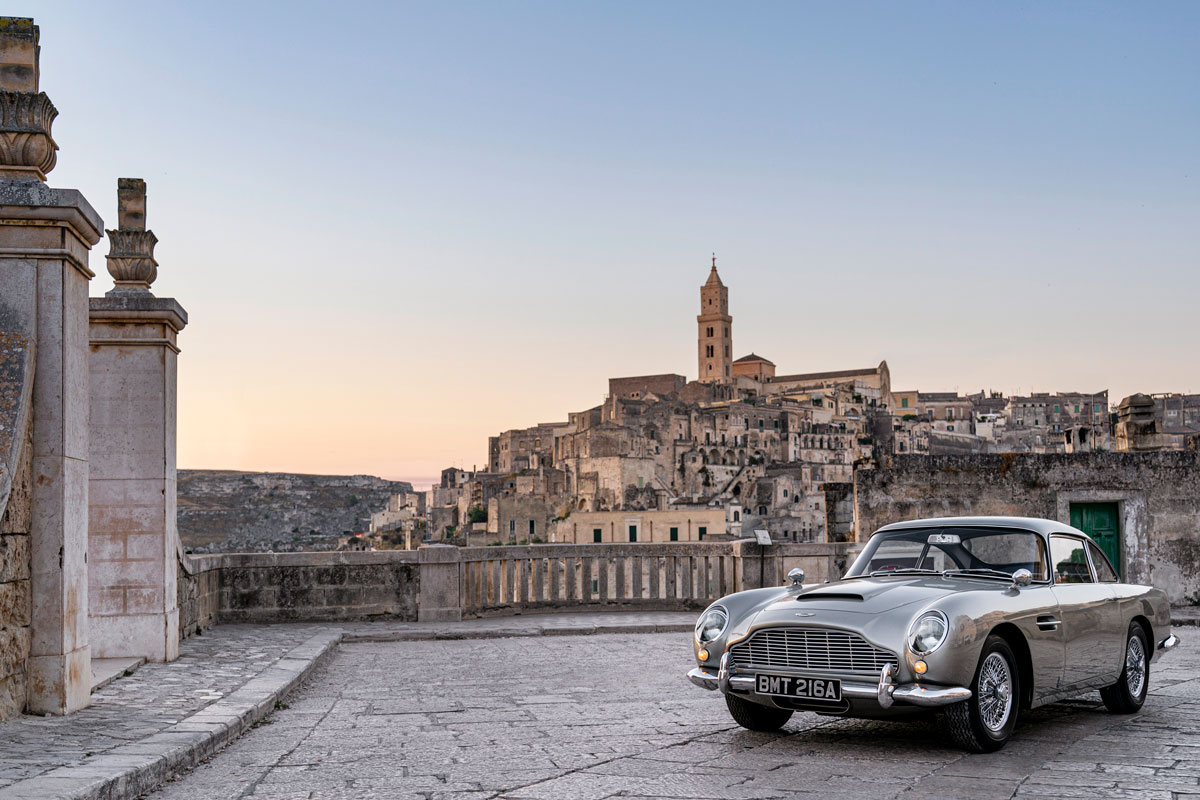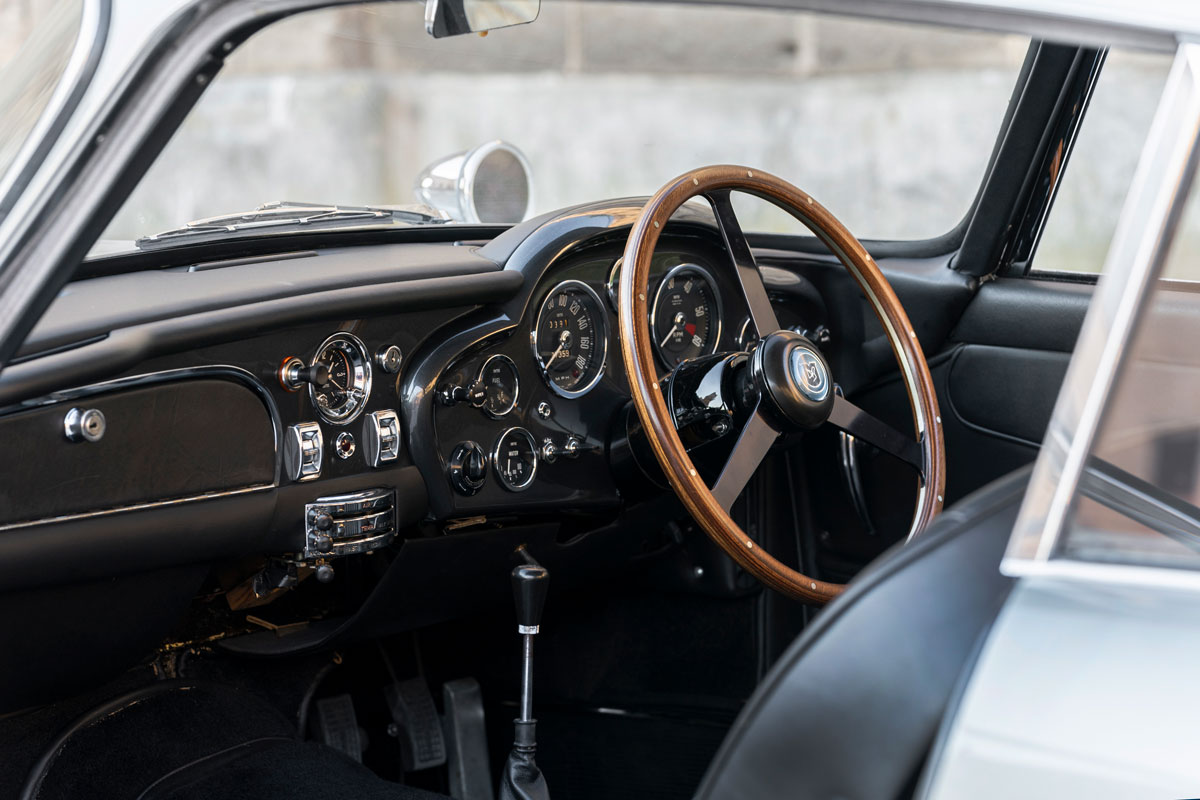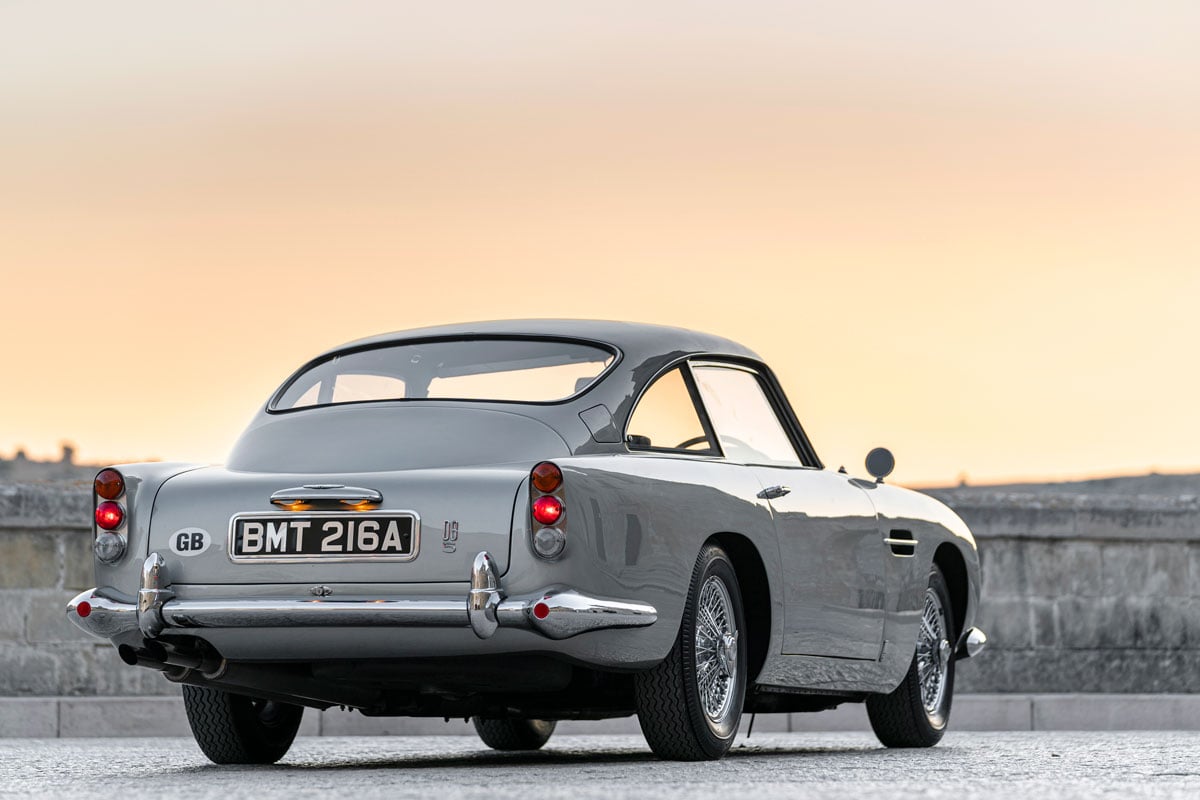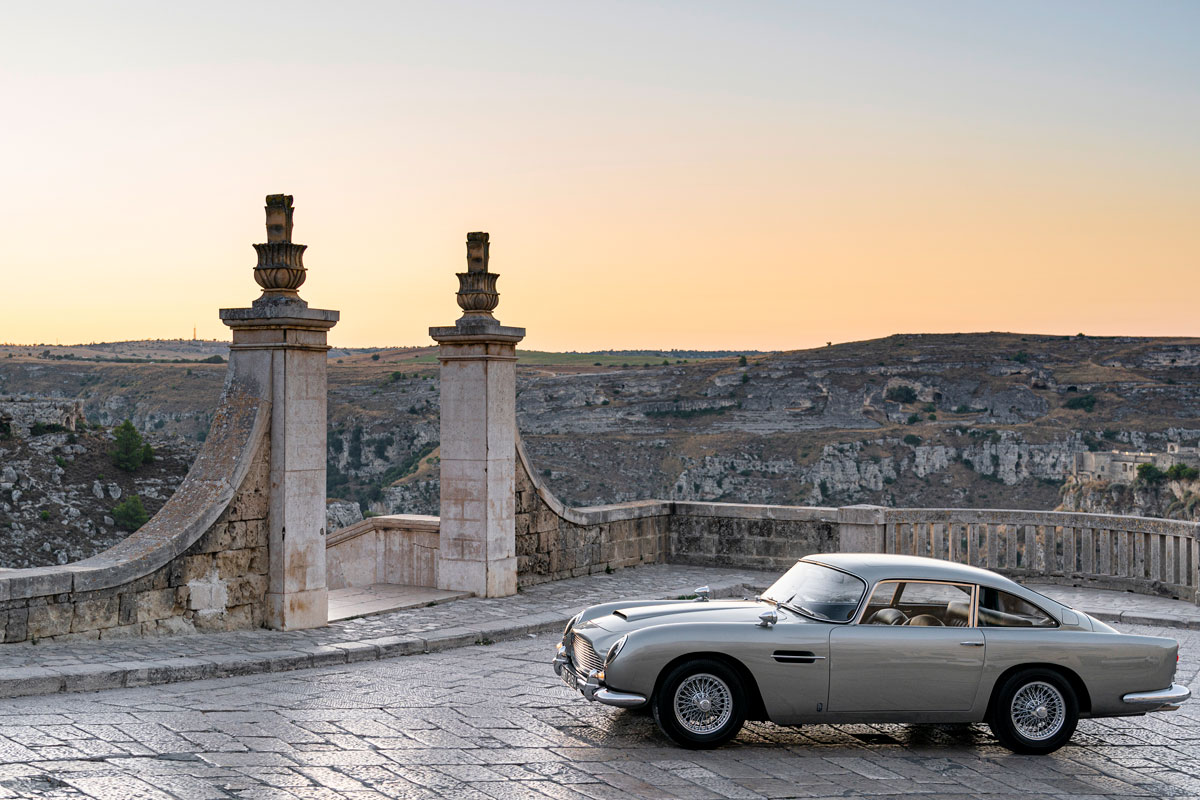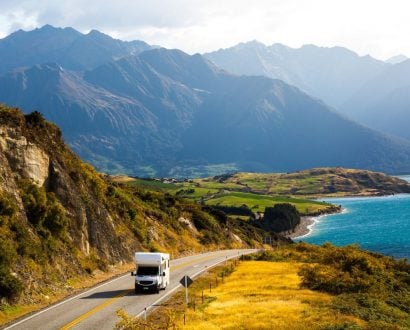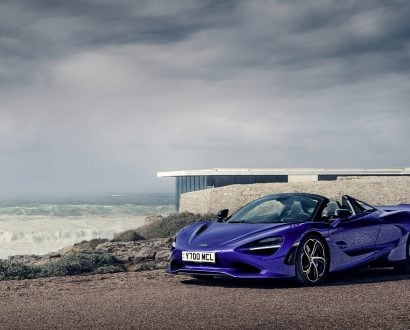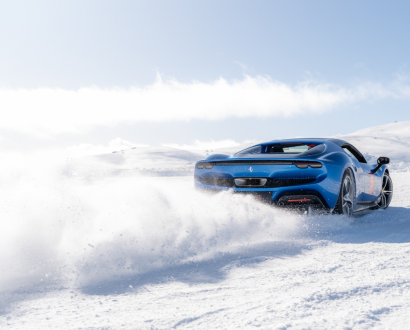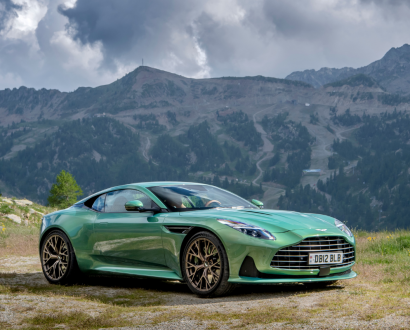We’re on the cramped balcony of a tumbledown Italian terraced house, 15 metres up, a knee-tremblingly vertiginous view over a classic piazza (think churches, sandstone pavements, nonnas on wooden chairs).
A posse of burly men in Eurotrash apparel are surrounding a silver 1960s Aston Martin DB5. They’re pointing machine guns. Bullets – look away now, vintage-car lovers – are spraying the Aston’s priceless body and windows. The wall of noise – the explosions, the crackles – is crucifying, even with the earplugs we’ve been advised to wear during takes.
If 007 is about to be wiped out, so is our hearing.
Of course, Bond doesn’t die. He never dies. (And for this 25th Bond movie, the clue is in the title.) He just reincarnates every decade or so, rising from the ashes with a younger face, sharper suits, better weapons. Which, in this case, happens to be a pair of Gatling guns that emerge from the DB5’s headlamps while Bond performs a deadly donut, sending his adversaries scuttling for cover.
For one day only, we’ve been granted rare access to the set of the forthcoming Bond movie, No Time To Die. You know, the one Daniel Craig swore he’d never do – famously saying he’d rather “slash his wrists” – until MGM turned his eyes into dollar signs with a reputed eight-figure incentive.
Craig and the rest of the ‘first unit’ (acting and dialogue) are due to arrive here in the ancient city of Matera, southern Italy, the following week. As guests of Aston Martin, our mission is to watch how the ‘second unit’ (action) piece together the famed Bond car-chase scenes; the stunts, the skids, the obligatory maiming of innocent newspaper stands.
“A great Bond chase scene is about coming up with something unusual… like donuts with mini-guns coming out of the headlights,” laughs Chris Corbould OBE, Special Effects Supervisor and veteran of 15 Bonds.
“There are so many car-chase scenes out there, Fast & Furious and all that, but we’ve got an iconic car and an iconic hero driving it, so we’re ahead from the start.”
On the morning of our arrival in Matera, details of the movie’s plot are sketchy at best (at the time of writing, it’s loosely known that 007 comes out of retirement to rescue a kidnapped scientist, setting him on a collision course with a tech-savvy terrorist – played by Rami Malek of Mr. Robot and Bohemian Rhapsody acclaim). The sense of secrecy is palpable – ditto the sulphury whiff of gunpowder residue – as we’re ushered past a security cordon 500 metres away from the set, through the pretty, narrow streets, and up to our vantage point above the piazza.
To plug possible plot leaks, Eon Productions, the British company that produces the Bond series, has rented every apartment around the square, and somehow persuaded locals to sign NDAs, but that hasn’t stopped videos of the car scenes flowing onto social media. We’re politely warned not to point our phones towards the action.
What we and the handful of other journalists on the precarious viewing balcony are privy to is the day’s shoot schedule: nail the scene currently unfolding beneath our feet, where Bond is trapped by villains in his Aston Martin, and then perform one of the movie’s signature car stunts: driving the DB5 through streets designed before cars existed, before ‘drifting’ into the piazza at around 145km/h.
“This is my fifth Bond and by far the most challenging city to work in,” says stunt coordinator Lee Morrison, who designs the car chases, and regularly body doubles for Daniel Craig. “The road surfaces in Matera – flint, marble, limestone, sandstone – are from different parts of Italy, and there’s a fine layer of dust over everything. We wash down the roads and treat them with Coca-Cola…” Hold up. You treat the roads with Coca-Cola? “It’s a trick that’s been used for years in the film industry. It gives the vehicles the traction they need to perform at high speeds.”
Around US$135,000-worth of the fizzy drink was bought solely for this purpose; no wonder the production budget is rumoured to be around US$2 million per day.
“I fight endlessly to do everything for real,” says Chris Corbould. “It brings something extra to the table.”
That’s one of the fascinating aspects of being an on-set voyeur: observing the ingenious sleights of hand employed by the 300-plus crew in order to pull off the slick, swaggering blockbuster that is a modern-day Bond franchise.
Today’s scene is a case in point. When No Time To Die drops in October 2021, you’ll watch from your cinema seat as the Aston Martin pivots seamlessly through 360 degrees, the edits chopping between vehicle point-of-view shots and in-car cuts of Daniel Craig at the steering wheel. What you won’t see is the DB5 looking like a cross between a car and a kitchen reno, festooned with scaffolding and ropes to hold the huge IMAX camera that will capture said POV footage.
There’s no driver; the Aston’s circle is only achievable because four beefy men are physically moving it, using the poles as leverage. Hidden to the side of the set, crew members are firing ‘squibs’ (pellets of gunpowder) onto the Aston’s bodywork to create bullet-spark effects. The source of the set’s deafening noise is not ammunition, but explosive rigs strategically mounted around the piazza’s perimeter. Through the prism of modern film technology, it looks acutely analogue.
But in some senses, that’s the essence of 21st century Bond. As digital effects continue to colonise Hollywood, the production team tries to steer clear of CGI wherever possible – erring towards the gritty authenticity of the Bourne series rather than the outlandishness of the Fast & Furious universe.
“I fight endlessly to do everything for real,” says Chris Corbould. “It brings something extra to the table.”
That’s why the villains’ machine guns in No Time To Die are real, decommissioned weapons, not plastic replicas (a metre-deep crate of which are guarded off-set by men who look like they bodyguard bodyguards).
And that’s why Aston’s special-projects division was commissioned to build, from scratch, eight DB5s especially for the movie, all completely driveable, all tweaked mechanically to perform different tasks in different scenes.
And if anyone fancies their chances of taking out 007, know this: the Astons are 100 per cent bulletproof. Like the man himself, you just can’t kill them.
No Time To Die is now open in selected cinemas around the world.
Read next: Aston Martin’s first SUV comes with a 291km/h top speed

